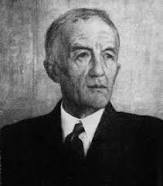View entry
Name: BAKER, Herbert, Sir

Short Name: bro of Arthur George Baker
Birth Date: 9 June 1862 Cobham, Kent
Death Date: 4 Feb 1945 Cobham
First Date: 1925
Profession: Architect
Area: Nairobi
Married: In Nursted, Kent 21 June 1904 Florence Edmeades b. 5 Sep 1878 Sandgate, Kent, d. 11 Nov 1965 Cobham
Children: Henry Edmeades (1905-1994); Alfred Patrick Edmeades (14 Aug 1914-1985); Ann M. (26 June 1916) (Frazer); another son
Book Reference: Wikipedia
School: Tonbridge
General Information:
In Kenya : Baker wrote: "The Governor and Director of Education were much concerned to provide a healthy education for the European youth under the conditions of the climate. So with their encouragement I designed a school at Nairobi with a crypt as a playground – like the undercroft of Wren's library at Trinity College, Cambridge, – where the boys could stay at mid-day instead of going home under the vertical rays of the sun. At the larger 'public school' at Kabete all the detached classrooms and houses were designed and built with connecting colonnades, in which respect I followed the excellent example set by [United States] President Jefferson in his beautiful University of Virginia." The use of colonnades accords with advice given to Baker by T. E. Lawrence, who regarded the tropical sun as "an enemy" and told him "All pavements should be covered over with light vaulting." The foundation stone was laid by Sir Edward Grigg on 24 September 1929, and the Prince of Wales School was opened in 1931 - (the original idea for the name of the school was Kabete Boys Secondary School, but the first headmaster, Captain Bertram W. L. Nicholson,[22] thought this to be too clumsy and therefore the name of The Prince of Wales School was suggested and eventually adopted).
Other impressive buildings in Nairobi designed by Baker and completed with his assistant, Jan Hoogterp, include the Law Courts and Government House (now State House), described as a Palladian mansion. However, the building with the closest resemblance to the Prince of Wales School may well be Baker's Government House (now State House) near the lighthouse at Ras Serani, Mombasa. Not only has it "large columned loggias", but it also has an archway, through which can be glimpsed the Indian Ocean, leading Baker to wax poetic: "One can live out between these columns both by day and night in the warm and soft sea air."
Knighted 1926
